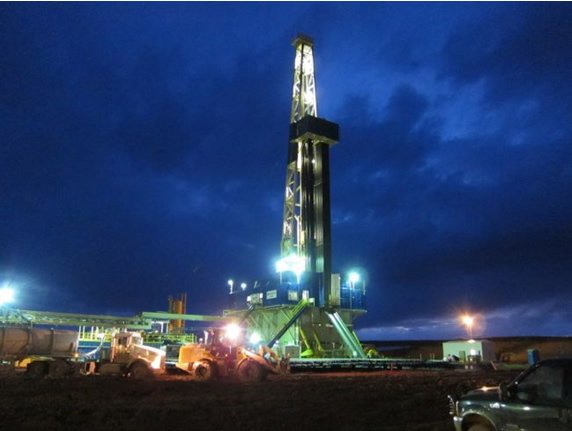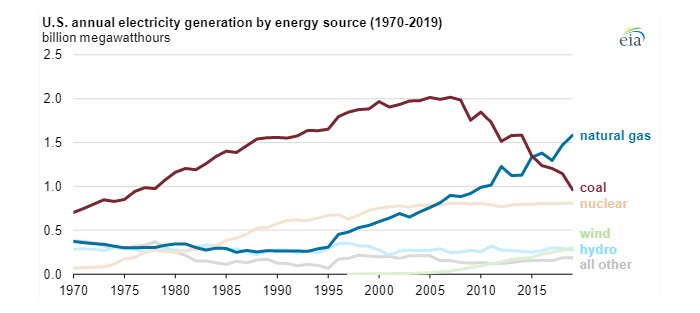Recent conditions have added a new variable to electricity prices. With social distancing and closing of non-essential businesses, there is decreased energy demand and activity in many commercial establishments across the country. Additionally, with increased numbers of people working from home, there is a reduction of energy usage in office buildings nationwide. The U.S. Energy Information Administration (EIA) predicts that all of this will have an impact on commercial electricity consumption during the next 3 to 6 months before usage begins to increase again.
Another factor that affects pricing is the cost of generating electricity. As you can see from the graph above, using natural gas to generate electricity is on the rise and is more often used than coal—which is dropping. Let’s look at this more closely.
Natural gas is often described as “clean burning” because it produces fewer undesirable by-products than coal or petroleum. It is also more energy efficient. On average, a typical coal-burning power plant in 2013 was about 33% efficient in converting heat energy into electrical power. A combined-cycle gas turbine power plant can be as much as 60% efficient.
What is a combined-cycle gas turbine (CCGT) power plant?
A CCGT power plant uses a form of highly efficient energy generation technology that combines a gas-fired turbine with a steam turbine.
The gas turbine is used to create electricity and then captures the resulting waste heat to create steam, which in turn drives a steam turbine—significantly increasing the system’s power output without any increase in fuel. The technology is typically powered using natural gas.
Is there more to the increased usage of natural gas over coal?
A big reason for the increase in our country’s natural gas supplies is the expanded extraction by hydraulic fracturing (fracking)1 of natural gas trapped in shale and other formations, a large resource that has increased nearly nine-fold since 2007. The EIA projects that within 25 years, shale gas will make up more than half of total domestic natural gas production.

The increased availability of low-priced natural gas has been the biggest factor in decreasing coal-fired generation of electricity.
The forecast reduction in overall electricity demand resulting from the economic slowdown, along with lower expected natural gas fuel costs for power generation, drives EIA’s expectation that wholesale electricity prices will be lower in 2020 throughout the country.
As we move into summer months, we could expect a slight increase in demand and thus prices, and at this time, it is unclear how shutting down the economy and the resulting revenue shortfalls for utilities and energy suppliers will be recovered, in other words, when higher electricity rates can go into effect.
Give one of our expert Energy Consultants a call today to get a Free Rate Analysis. The time has never been better to lock in a fixed low rate for your commercial electricity and/or natural gas. We can go over your energy bill with you in detail and will always look for the best electricity or natural gas rate in the current market. These rates have been surprisingly low! Call us today. 1-866-748-2669.



